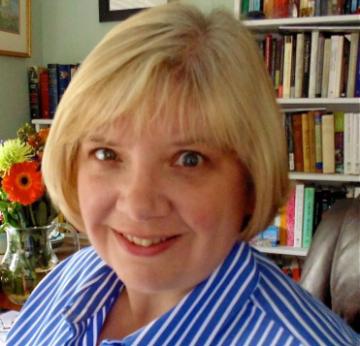
Cartographers of Church
Young adults are less and less likely than their older counterparts to consider themselves religious. According to the Pew Research Center, 43 percent of people in the U.S. under the age of 40 say religion is very important to them, compared to 60 percent of adults over 40. To Elizabeth Drescher, Adjunct Associate Professor of Religious Studies at Santa Clara, that doesn’t mean her students are incapable of engaging the spiritual and sacred.
Over the past two years, her students have become novice field researchers in the local spiritual landscape. They physically visit sites of spiritual significance—from Presbyterian churches and Sikh gurdwaras to Santa Cruz beaches where locals practice yoga—and document their observations and experiences via a geo mapping application, Encounter, developed by Drescher and Religious Studies Adjunct Lecturer Jaime Wright, with the support of LRC Student Fellows Connor Holttum (’18), Nick Nagy (’19), Claire Dixon (’19), and Casey Xuerub (’19). We chatted with Drescher about the significance of mapping religion and spirituality in Northern California.
What first motivated you to document and plot religious and spiritual spaces with your students?
I got interested in finding ways to teach religion that moves beyond text. My focus is on how ordinary people “do’” religion—how we make it, how we use it in our everyday, ordinary lives. That involves looking at things like religious spaces—not formal spaces necessarily, but how people come to encounter a space as “religious” or “spiritual” on their own terms. Another component of the project was taking seriously students' perspectives on their own religious and spiritual experiences, observations, and reflections. So I wanted to find a way of engaging them in understanding religion as a lived practice that influences real, everyday life.
And that then developed into the Encounter map?
Yes. I was a SCU Center for the Arts and Humanities fellow in 2017-2018, which, along with the Wabash Center (that supports religion and theology faculty), provided initial funding for development of the platform. My colleague Jaime Wright and I have a 2018-2019 teaching and technology grant that has supported continuing development of the project. Encounter is a story mapping platform that visually and geospatially tracks students’ experiences in both formal and informal religious and spiritual spaces, mapping not just where they’ve been, but also the stories that define those spaces.
Why is the mapping element—literally plotting points on a digital map of the Bay Area—important?
We want to be able to tell the story of how the religious and spiritual exist in and around the university and local communities. This way we can see young adults’ perspectives on religion and spirituality as it plays out across the landscape they’re exploring.
For example, one of the locations my students often visit is the Duc Vien Buddhist Pagoda in San Jose’s Little Saigon neighborhood. It’s an area that’s pretty gritty, marked by gas stations and strip malls; there aren’t many parks close by. But there’s this pagoda in the midst of it all that offers a very different experience of sensory delight, with of all these beautiful pathways and incredibly ornate statues and people doing walking meditations or chanting. Yet it’s also connected to the urban reality that surrounds it. It’s a community center where second- and third-generation kids come to learn Vietnamese so they can talk to Grandma, and learn their culture and history. Students see that Duc Vien exists in relationship to its surroundings, not separate from it. That’s important learning in a world in which religion and spirituality are often represented as disconnected from everyday life—as private things we do over there, apart from the rest of our worlds.
What is the value of a tool like Encounter?
We want Encounter to be a platform on which people from outside the university can see how young people are experiencing religion in the local landscape. This is way more valuable than kind of a Yelp map of “here are a bunch of spiritual places and their reviews.” It’s really a tableau of experiences that young people are both observing and participating in.
For students, I want them to see that religion and the spiritual are happening in concrete, material ways in real spaces, in real lives; they’re not just abstract, theoretical constructs that they can write a paper on and be done with it.
What about the technological aspect of it?
I think it’s also important that we’re giving these young adults a tool that feels native to them. They go out with their iPhone and they’re doing this mapping, taking photos and telling stories, collecting data in a way that feels as comfortable as posting on Instagram.
Eventually, we’ll be able to pull some really interesting data from the map. We can overlay the spiritual plot points with demographic data that tells us things about household income or size or ethnicity, so as to look at all the ways different relationships, religious and spiritual spaces, have to different social dimensions.
How has this project informed your study into the religiously unaffiliated, AKA “nones,” that more and more young people are identifying as?
There’s this idea that religion and spirituality are dying. But I don’t think that’s exactly what’s happening. I think we’re in a moment where religion and spirituality are being redefined and, importantly, young adults are really central to that redefining. So understanding how they perceive and experience spiritual places is really important. Being able to see their perspectives on what’s happening in the world around them, on a map, in religious and spiritual terms? That really counts. That really matters as we try to understand the shifting spiritual and religious landscape that moves from traditional sites—churches, temples, shrines, etc.—to beaches and parks, or, increasingly, commercial spaces like SoulCycle and yoga studios.

